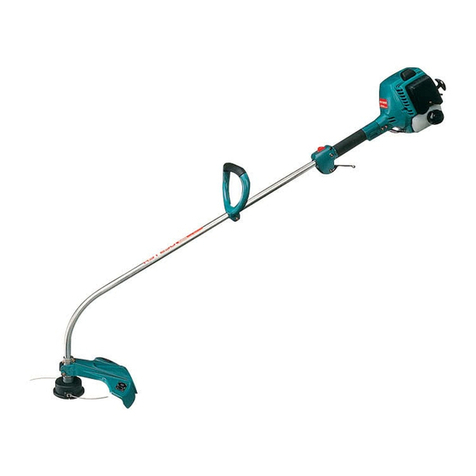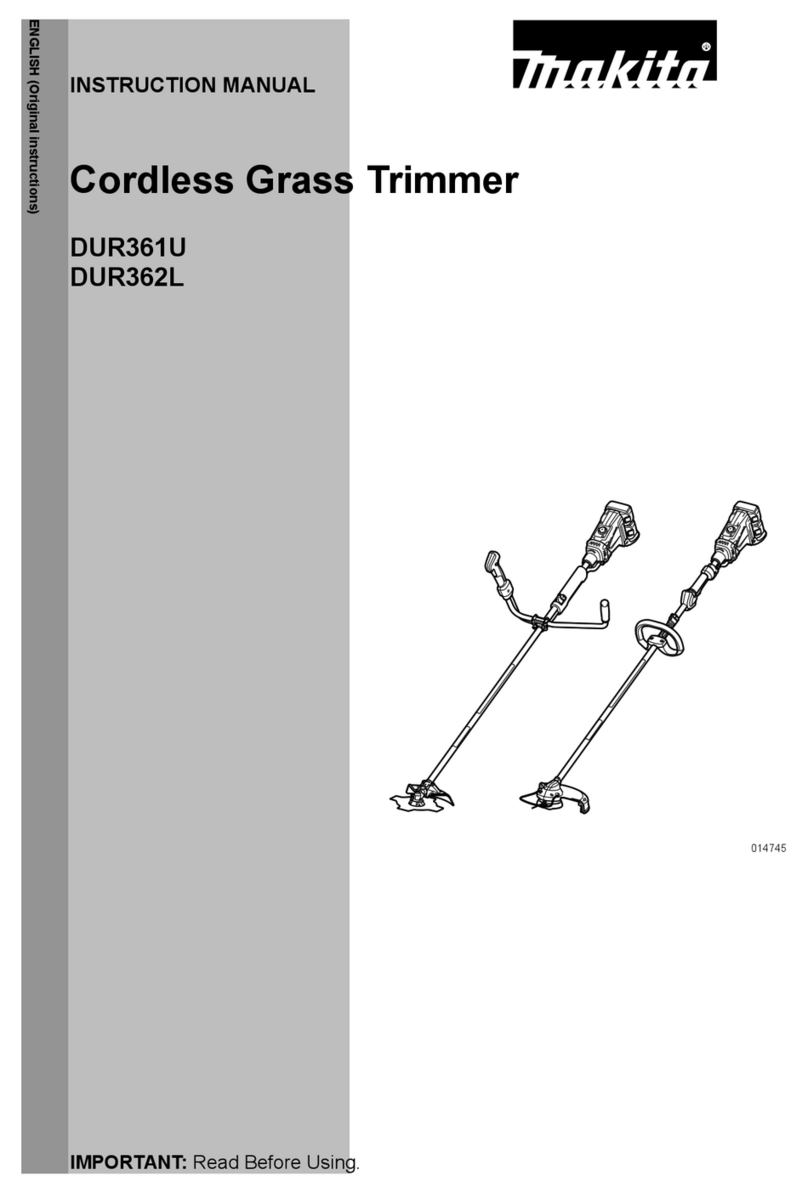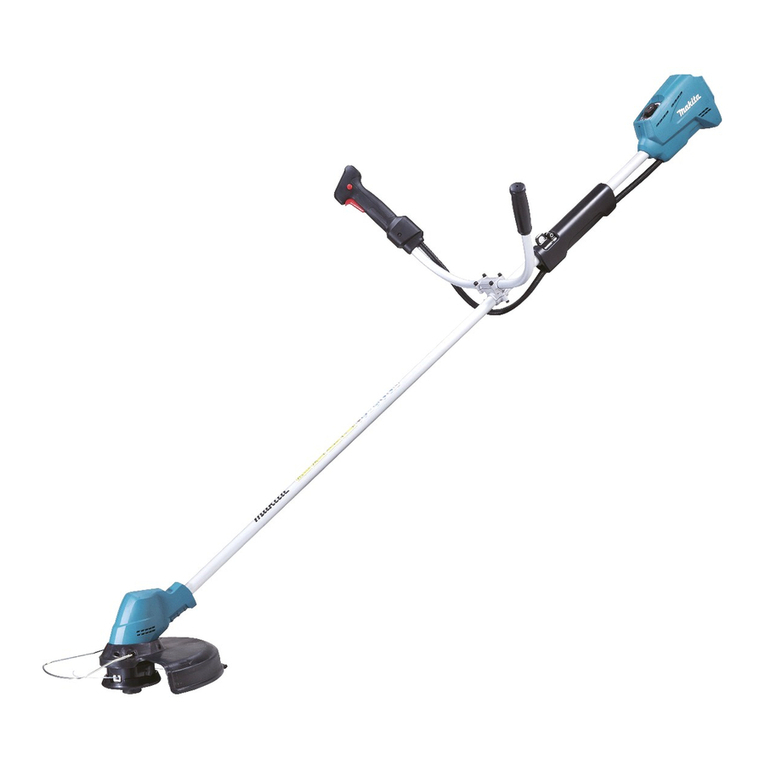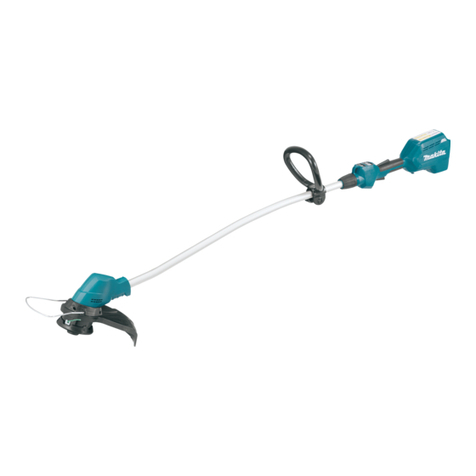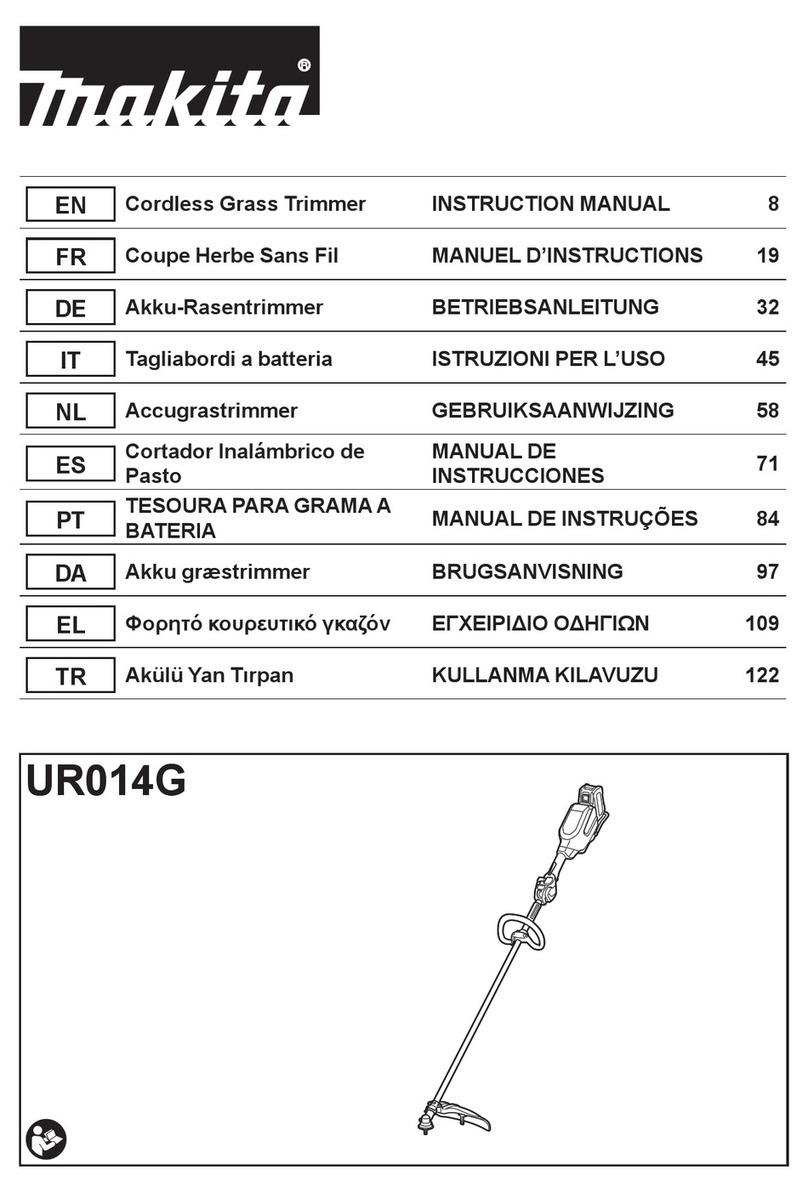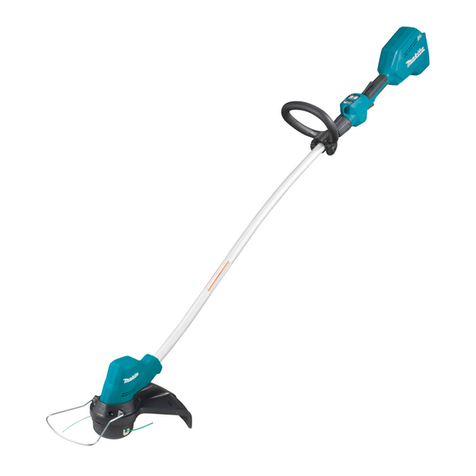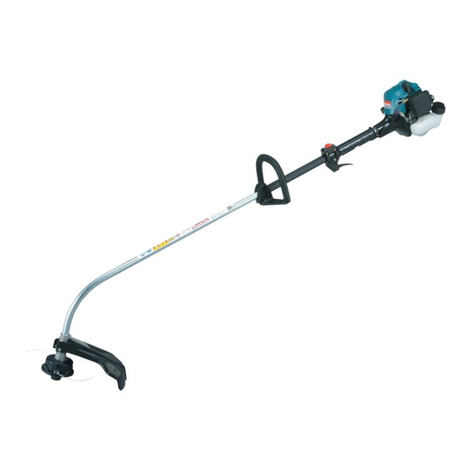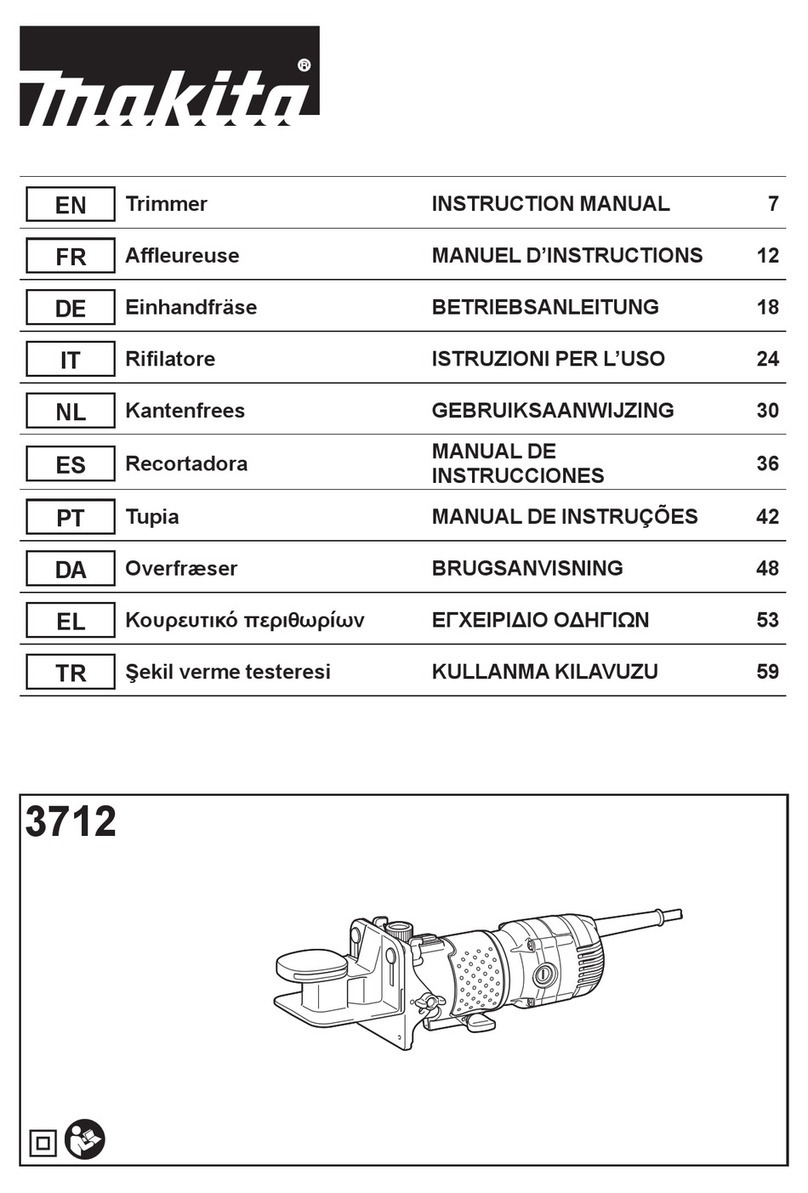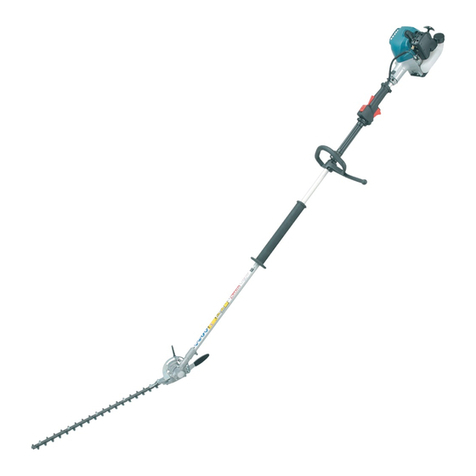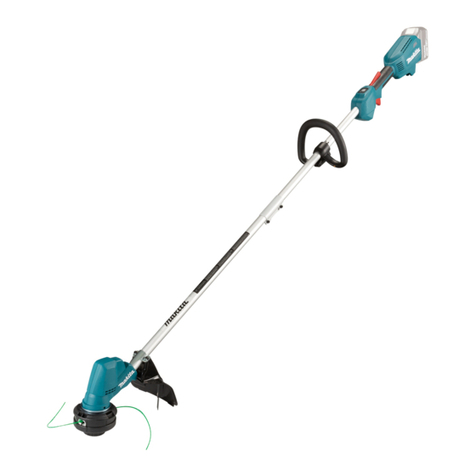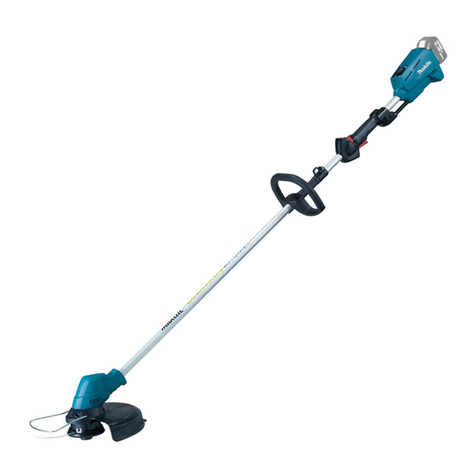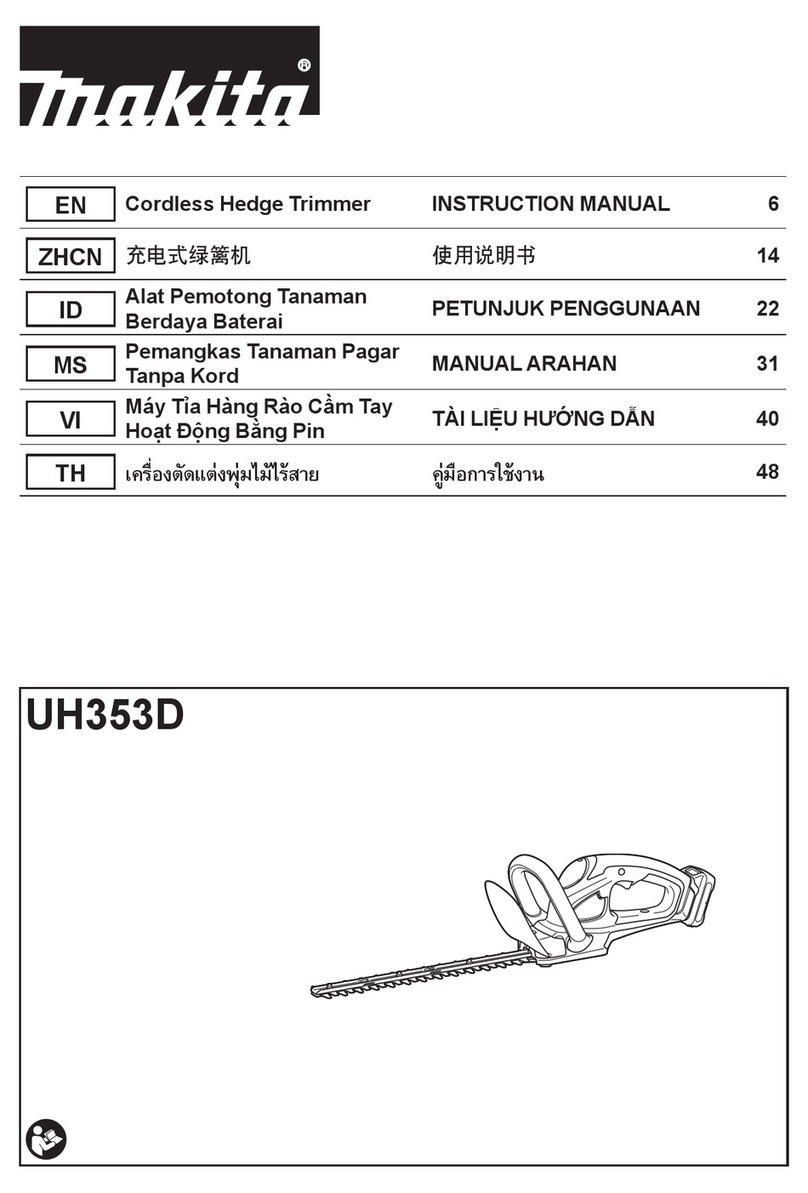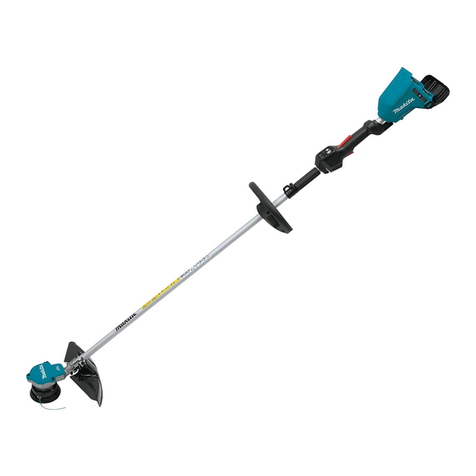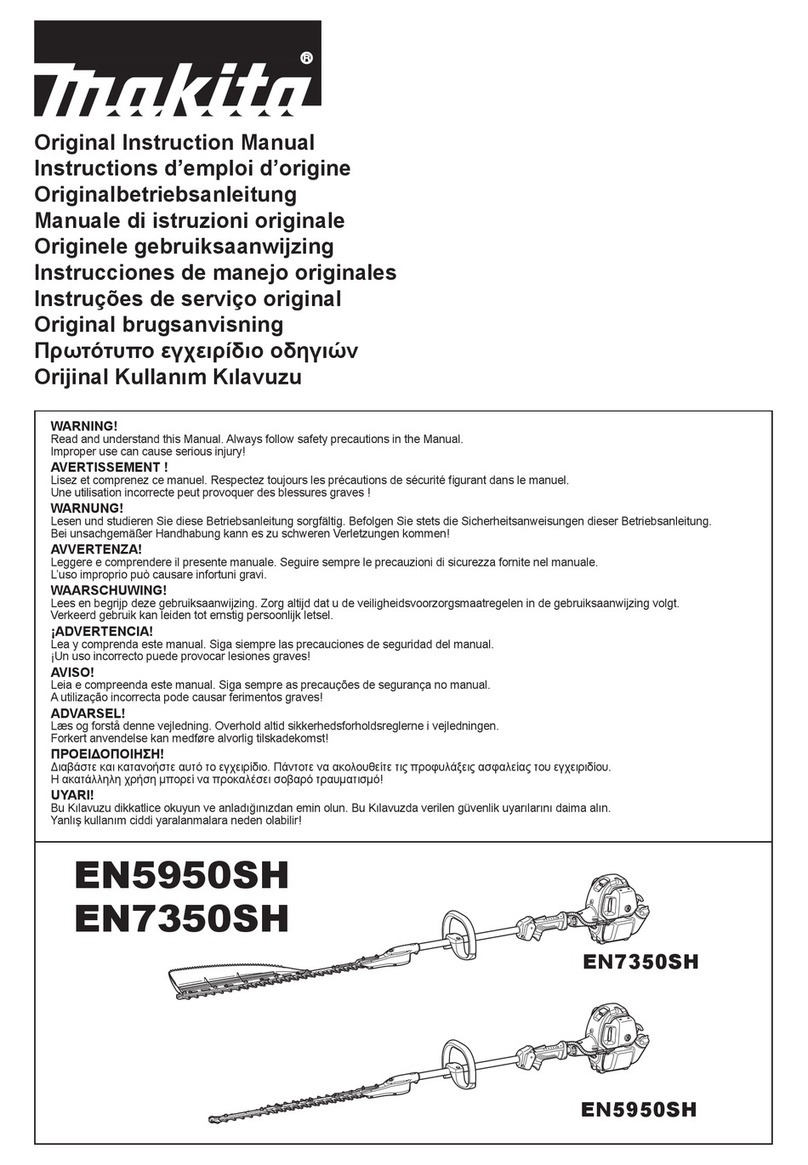
3
010820
3. Always wear a helmet where there is a risk of
falling objects. The protective helmet is to be
checked at regular intervals for damage and is to
be replaced at the latest after 5 years. Use only
approved protective helmets.
4. The visor of the helmet (or alternatively goggles)
protects the face from flying debris and stones.
During operation of the equipment always wear
goggles, or a visor to prevent eye injuries.
5. Wear adequate noise protection equipment to
avoid hearing impairment (ear muffs , ear plugs
etc.).
010821
6. The work overalls protect against flying stones
and debris. It is strongly recommended that the
user wears work overalls.
7. Special gloves made of thick leather are part of
the prescribed equipment and must always be
worn during operation of the equipment.
8. When using the equipment, always wear sturdy
shoes with a nonslip sole. This protects against
injuries and ensures a good footing.
Electrical and battery safety
1. Avoid dangerous environment. Don't use the
equipment in damp or wet locations or expose it to
rain. Water entering an equipment will increase
the risk of electric shock.
2. Recharge only with the charger specified by the
manufacturer. A charger that is suitable for one
type of battery pack may create a risk of fire when
used with another battery pack.
3. Use power tools only with specifically designated
battery packs. Use of any other battery packs may
create a risk of injury and fire.
4. When battery pack is not in use, keep it away from
other metal objects, like paper clips, coins, keys,
nails, screws or other small metal objects, that
can make a connection from one terminal to
another. Shorting the battery terminals together
may cause burns or a fire.
5. Under abusive conditions, liquid may be ejected
from the battery; avoid contact. If contact
accidentally occurs, flush with water. If liquid
contacts eyes, additionally seek medical help.
Liquid ejected from the battery may cause
irritation or burns.
6. Do not dispose of the battery(ies) in a fire. The cell
may explode. Check with local codes for possible
special disposal instructions.
7. Do not open or mutilate the battery(ies). Released
electrolyte is corrosive and may cause damage to
the eyes or skin. It may be toxic if swallowed.
Starting up the equipment
360°
010822
1. Make sure that there are no children or other
people within a working range of 15 meters (50 ft),
also pay attention to any animals in the working
vicinity. Otherwise stop using the equipment.
2. Before use always check that the equipment is
safe for operation. Check the security of the
cutting tool and the guard and the switch
trigger/lever for easy and proper action. Check for
clean and dry handles and test the function of the
start/stop.
3. Check damaged parts before further use of the
equipment. A guard or other part that is damaged
should be carefully checked to determine that it
will operate properly and perform its intended
function. Check for alignment of moving parts,
binding of moving parts, breakage of parts,
mounting, and any other condition that may affect
its operation. A guard or other part that is
damaged should be properly repaired or replaced
by our authorized service center unless indicated
elsewhere in this manual.
4. Switch on the motor only when the hands and feet
are away from the cutting tool.
5. Before starting make sure that the cutting tool has
no contact with hard objects such as branches,
stones etc. as the cutting tool will revolve when
starting.
